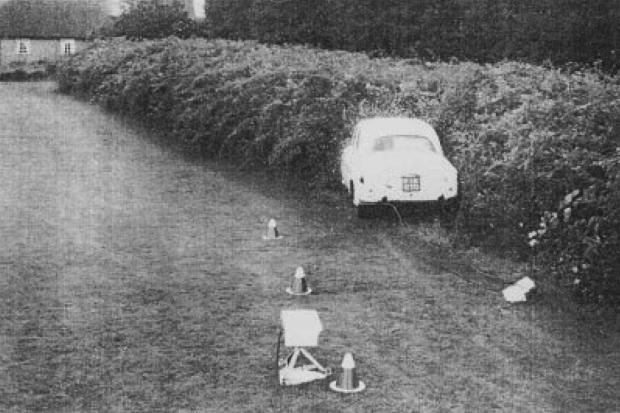
1966: Graham Hill wins the Indy 500, Star Trek hits American TV, The Beach Boys release Pet Sounds, England wins the football World Cup and John Lennon proclaims that The Beatles are more popular then Jesus. Meanwhile, in Langley, Buckinghamshire, a curious scientific test was coming to an interesting conclusion.
According to a not-very-top-secret Ministry of Transport file, in 1957 a simple hedge was planted in the grounds of the Road Research Laboratory. In fact, a series of hedges were planted and after six years the most successful was singled out for attention: a Rosa Multiflora Japonica to be precise.
When this chosen hedge reached maturity some years after that, timing equipment was set up, specific instructions issued and no doubt scientists donned white lab coats and clasped clipboards to their chests. Then, to put it simply, someone drove a car straight into the hedge. Several times.

Sounds crazy, but in true British spirit, there was method behind the madness. Someone had worked out that the average width of the central reservation on Britain’s then relatively new motorways, could potentially accommodate a thick hedge – providing not just something pretty to look at while reaching heady speeds in your Ford Anglia (well it looks like a 100E in the blurry pictures, but I'm open to suggestions), but also something that could potentially save your life.
